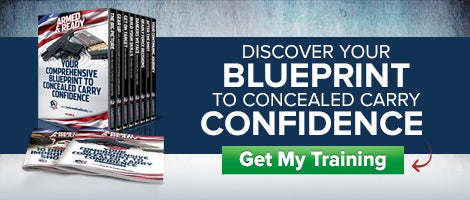We can argue about gun safety all day. Are there four cardinal gun safety rules or are there 10 Commandments of gun safety? Should you treat every gun as if it is loaded at all times or should you know the status of your firearm at all times? Can you break one safety rule and still be safe, or is a single infraction cause for serious concern?
Many years ago, I was walking in the woods hunting deer with an old Winchester Model 94. I had just gotten out of the truck, uncased the rifle, and was heading up the trail to meet some other hunters for a deer drive. My rifle was completely unloaded, but no one could have known that. It was also fully cocked. As we gathered to discuss the drive and where the standers would be, one of the other guys in the group said, “Hey…you know your gun is cocked, right?”
I told him I knew; then I ran the lever down to show him nothing was in the chamber or the tube magazine. He thanked me and said, “Can never be too careful. You don’t know how people will act out here in the woods.”
I was not offended that he would question my gun safety. He saw what appeared to be an unsafe act and he asked me about it. That’s the way these things should work.
But even though the hammer was fully cocked on that rifle, I had always kept the muzzle pointed in a safe direction and was careful never to put my finger on the trigger. For the record, I carried that Model 94 on deer drives because it is light, short, fast in the woods, and, most importantly, I could carry it with an empty chamber while stumbling through the cedar boughs, but still quickly load and make ready if I had a good, safe shot at a deer in the woods.
How does this apply to concealed carry, especially when we typically carry our defensive sidearm with a round in the chamber? Well, let’s talk about what I consider the two most important elements of firearms safety: muzzle management and trigger finger discipline.
Muzzle Management
You have heard the rule and likely even recited it: Never point a firearm at anything you are not willing to destroy.
Sound advice, though it may be simpler to say, “Always point your firearm in a safe direction.” Then, of course, we must explain what a “safe direction” really is. On the range, the safe direction is typically downrange, at the berm or the backstop. But what are you going to do on the street? Is the low ready position safe? Most of the time, yes. But there may be extenuating circumstances. So let’s make it very simple: Only point your weapon in a direction where it will do no unintended harm if you fire it. In short: Manage the muzzle at all times. Think about not only the direction in which you are pointing your gun, but why. If you are standing on the second floor of your home and you don’t know who is beneath you on the ground floor, wouldn’t the high ready position be best? If you are leading a group of family members to safety by heading up an incline or a flight of stairs, the low ready may put you at a disadvantage. As long as you know and can explain why you are pointing your gun where you are pointing your gun, it is a good bet you are concerned about safety.
Trigger Finger Discipline
Once again, we go to the old rule: Keep your finger off the trigger until you have made a conscious decision to shoot.
Again, this is good advice. But trigger finger discipline is much more than this. Not only should you keep your finger off the trigger until you are on target, you should also know how to operate your trigger effectively to keep your gun on target. You want to operate that trigger so that you add no additional movement to the muzzle as you fire. When you are done shooting, you may remove your finger from the trigger guard and assess as to whether or not you have to shoot again.
Firearms safety gives us a lot to think about, but if we can break it down into the simplest terms and focus on the outcome we want (rounds on target) we can ensure that our bullets only go where we want them to go.


